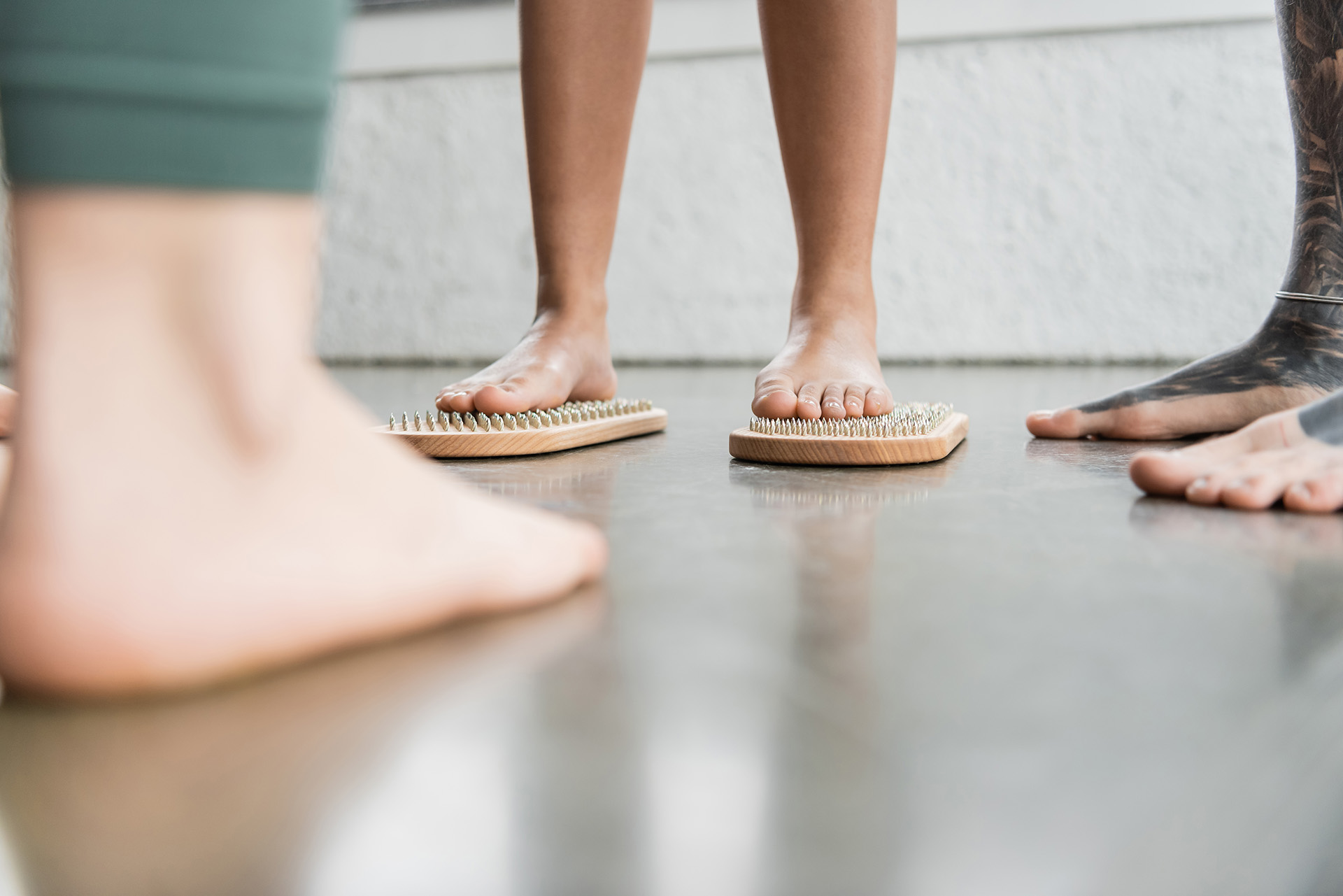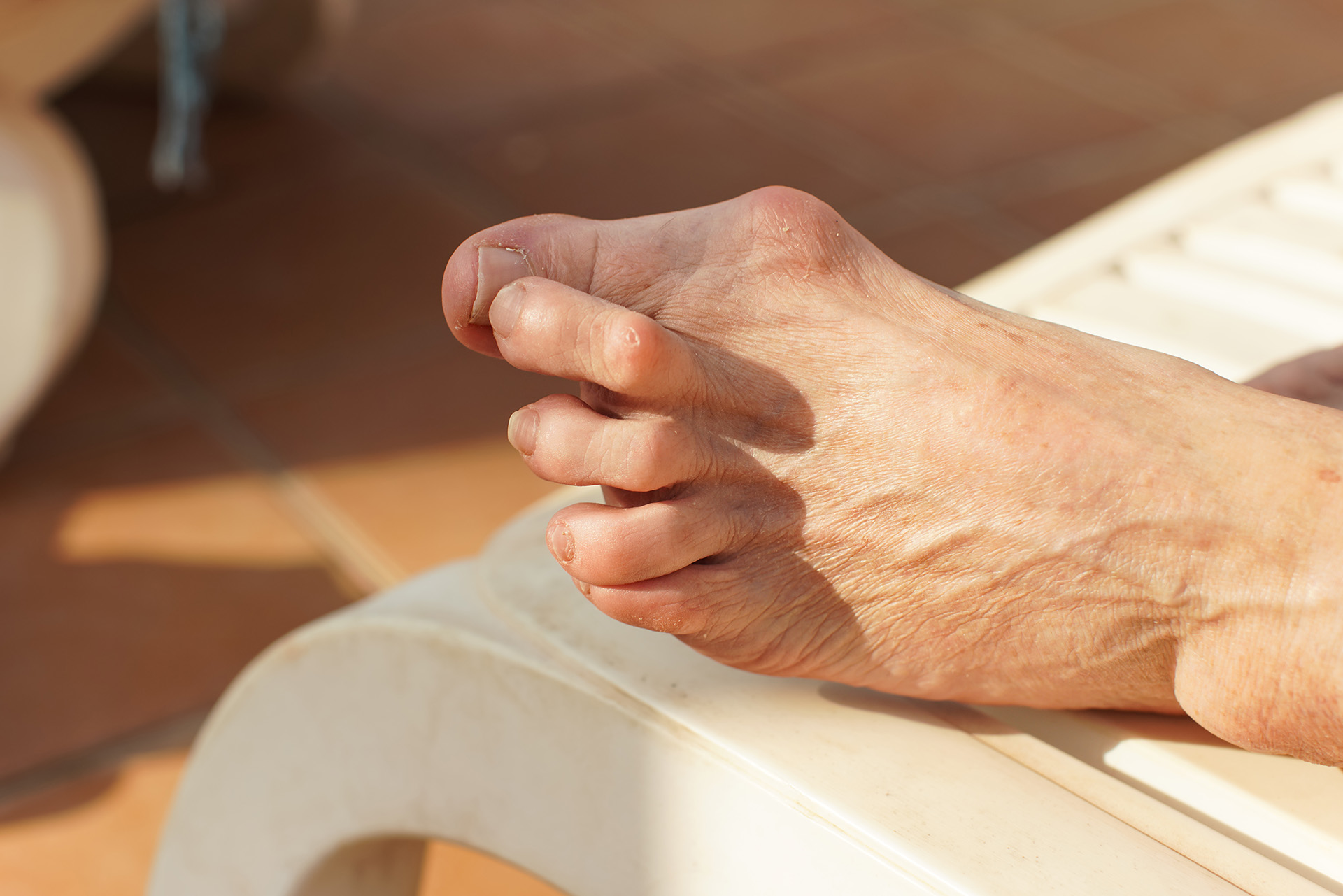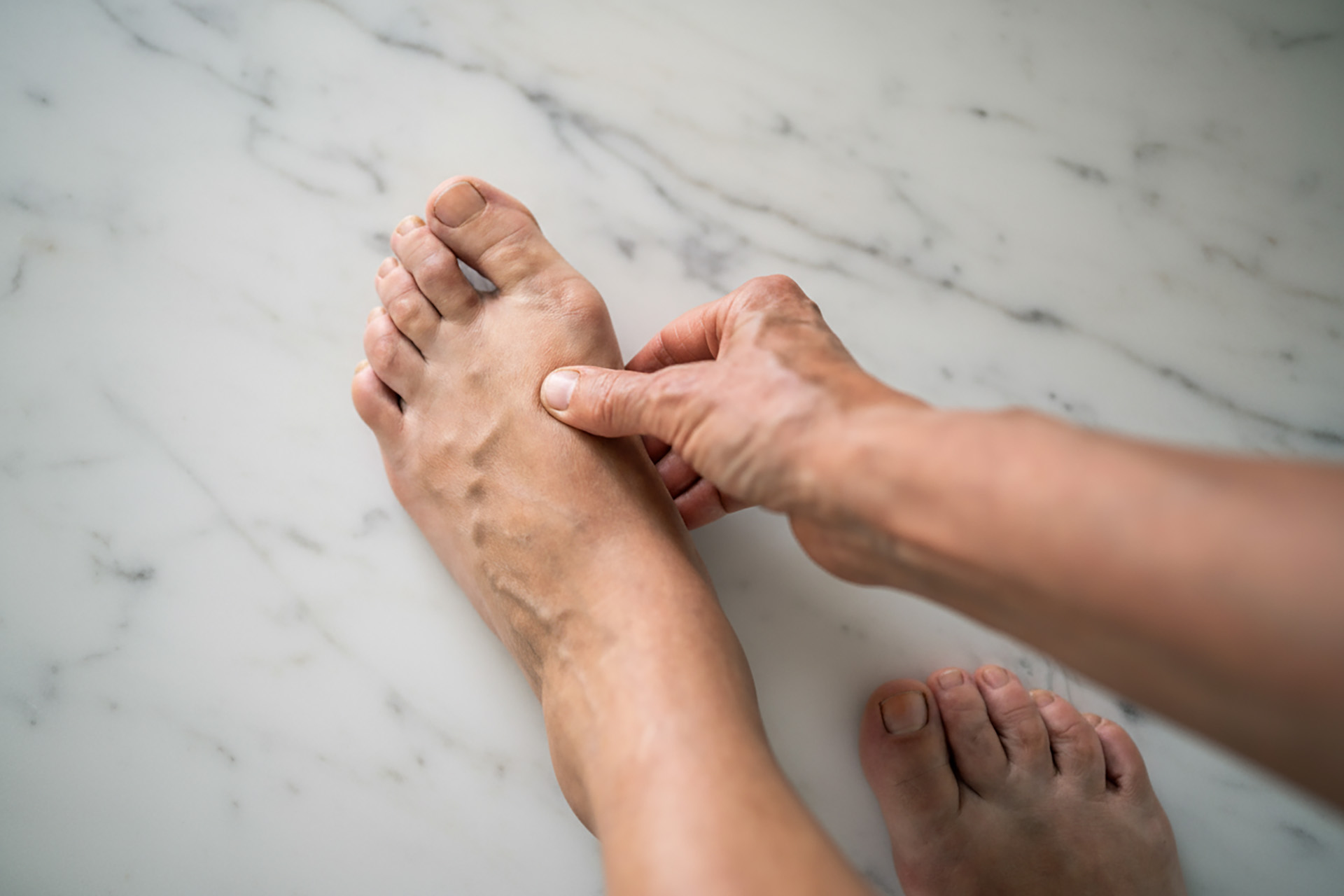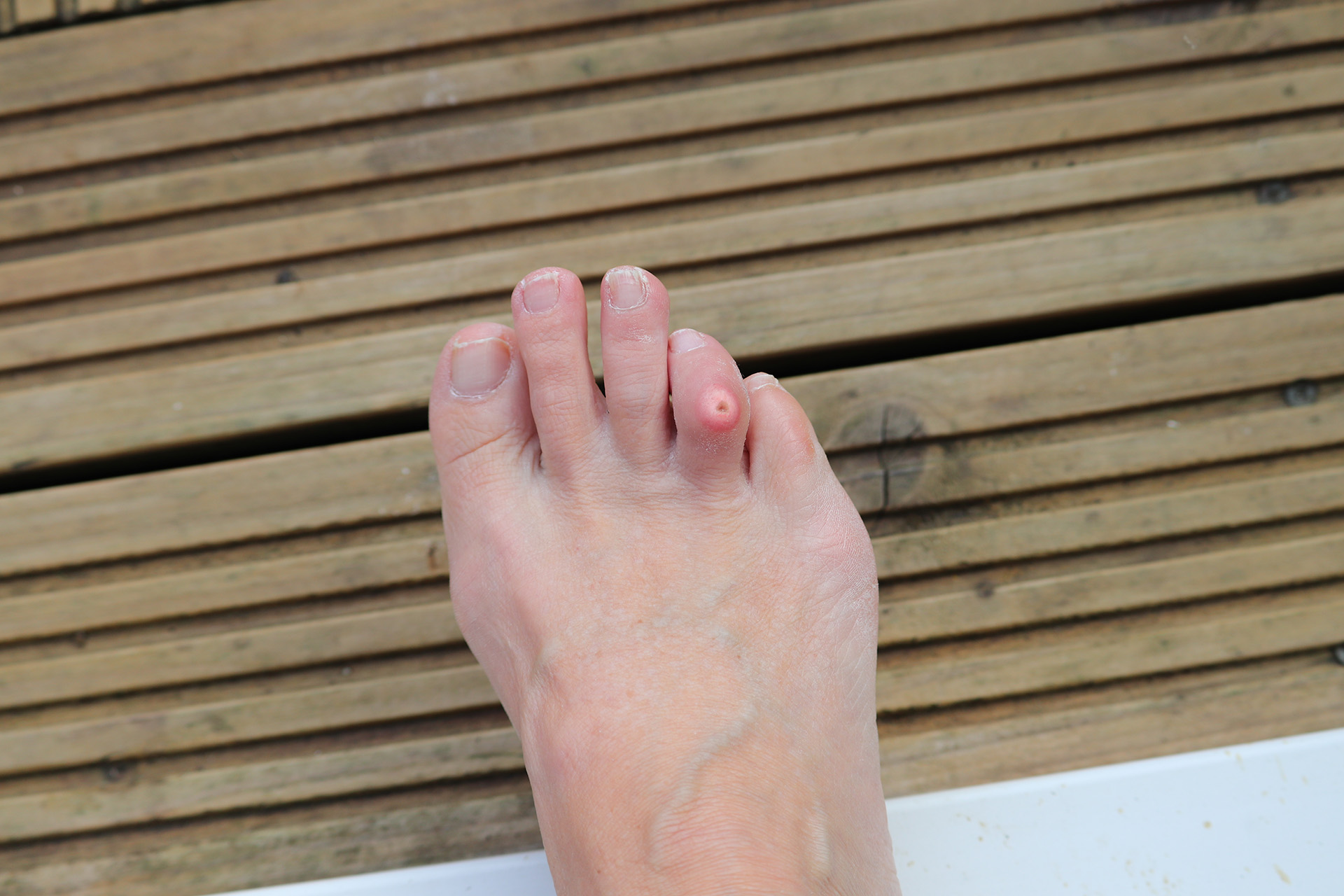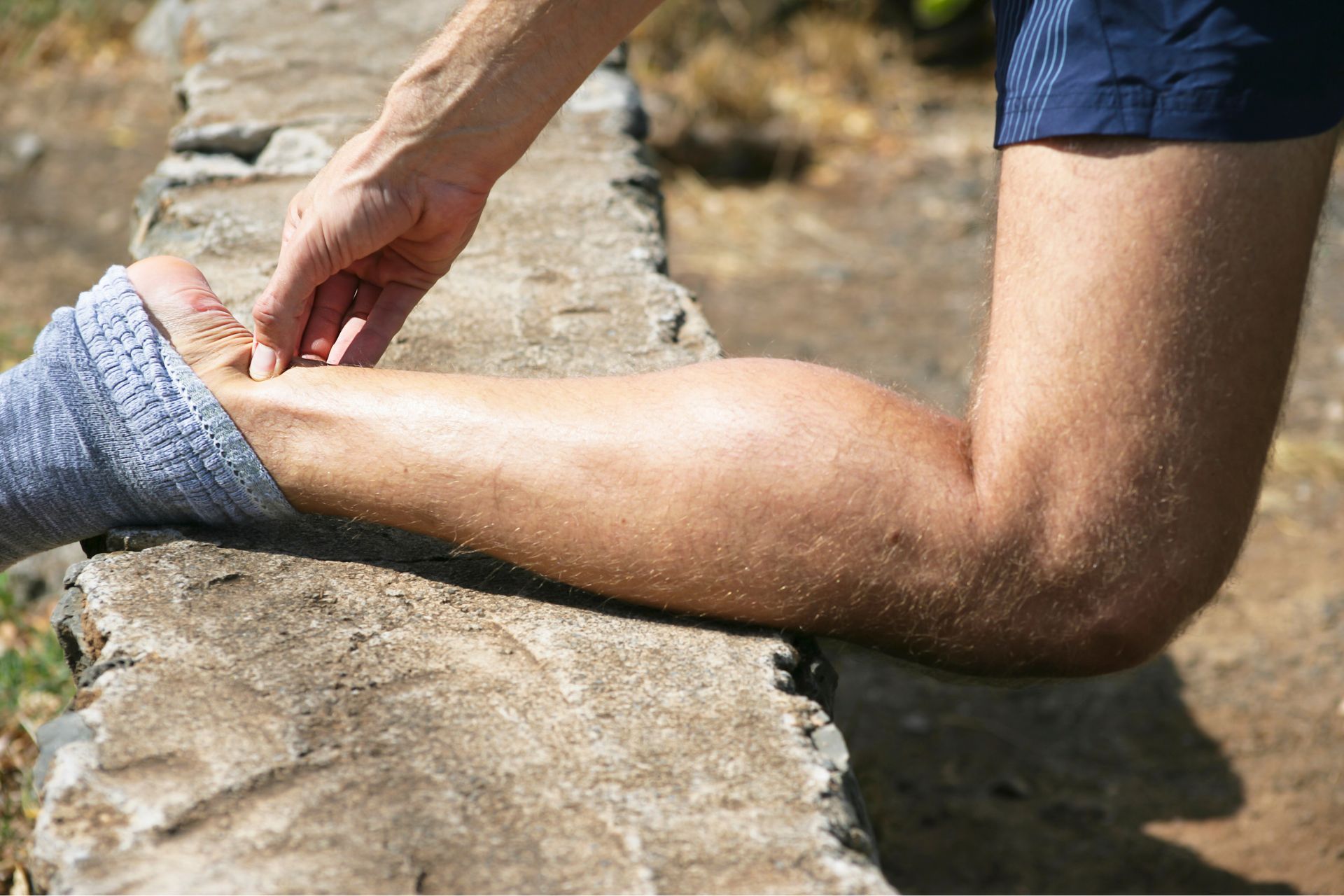Flat feet (pes planus) occur when the arches of the feet are either very low or absent. Sometimes referred to as fallen arches, this common condition affects people of all ages. In infants and young children, flat feet are normal as the arches are still developing, but sometimes, the arches never fully form. When this condition persists into adulthood, it can create challenges ranging from subtle fatigue to more disruptive flat foot pain.
For many people, flat feet are simply an anatomical variation that causes no discomfort. However, for some, the condition can lead to recurring issues, such as flat foot sole pain, ankle or arch pain, which interfere with daily activities, sports and the overall quality of life. This is because the loss of the natural arch affects how forces travel through the body, influencing posture and alignment in ways that extend beyond the feet. Over time, this misalignment can contribute to strain in the knees, hips and lower back, illustrating the interconnectedness of the musculoskeletal system.
Studies suggest that approximately one in five people live with flat feet, with a higher prevalence among Asian populations. While many people live comfortably without symptoms, untreated flat feet can gradually lead to secondary conditions, such as plantar fasciitis, Achilles tendonitis, shin splints or chronic knee pain. For runners or active individuals, these complications can become particularly limiting.
What may begin as intermittent flat foot pain symptoms can progress to persistent discomfort if left unchecked. With timely podiatric care, you can work towards alleviating flat foot pain, improving mobility, and preventing long-term complications.
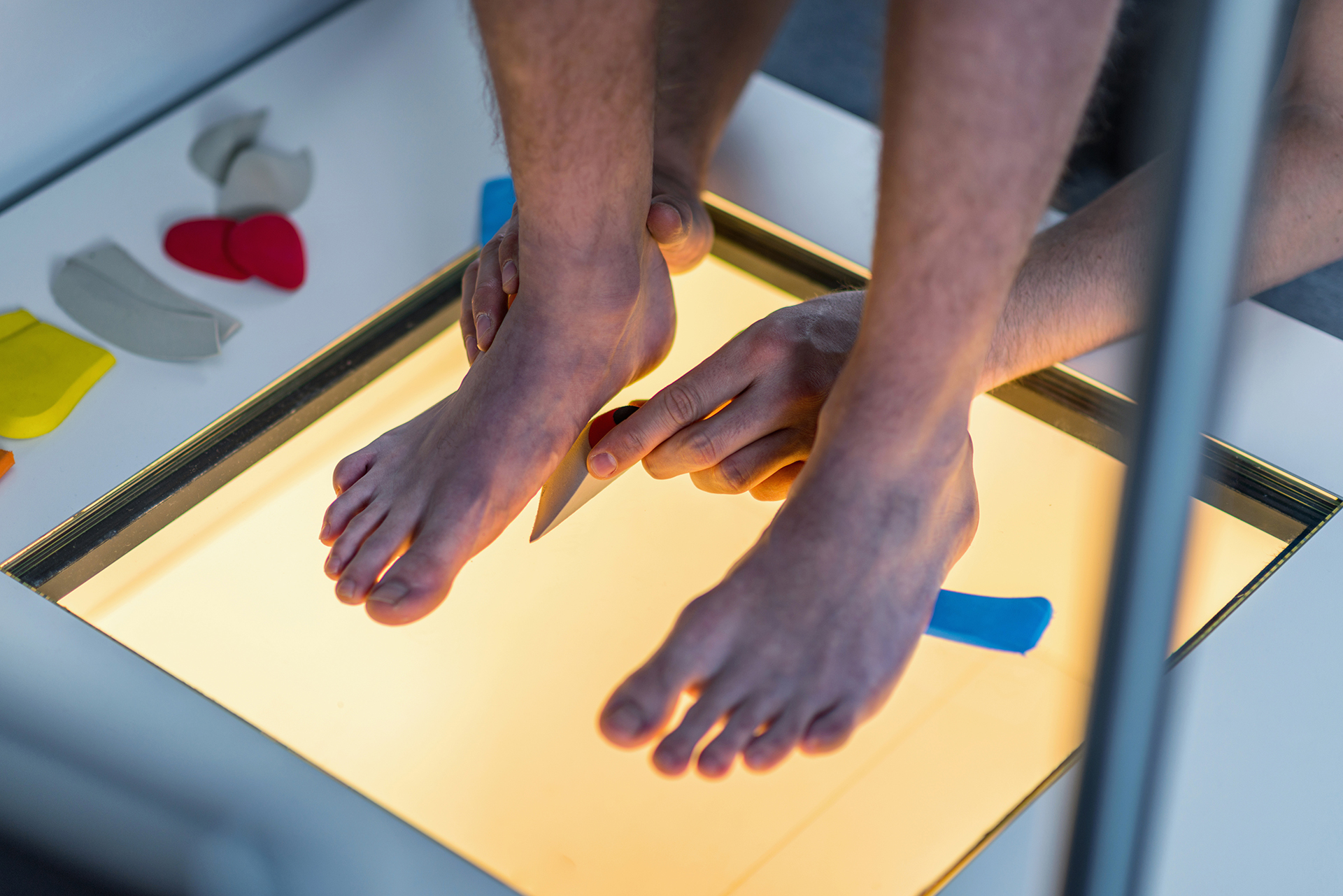
What Causes Flat Foot Pain?
The causes of flat foot pain are varied. Genetics can predispose some individuals to inherited ligament laxity or congenital differences in foot structure. Lifestyle factors also play a significant role: prolonged standing, obesity and unsupportive shoes can all contribute to stress across the arches. High heels, for example, can restrict natural toe movement, placing further strain on the feet.
Ageing and medical conditions such as diabetes, rheumatoid arthritis, or posterior tibial tendon dysfunction may weaken the tendons supporting the arch. Injuries or repetitive stress from running or impact sports can also damage the foot’s support structures. One key mechanical risk is subtalar pronation, which refers to excessive inward rolling of the foot during standing or walking, thereby disrupting alignment up the kinetic chain from the ankles to the knees, hips, and lower back. This misalignment is often at the root of ongoing flat foot feet pain.
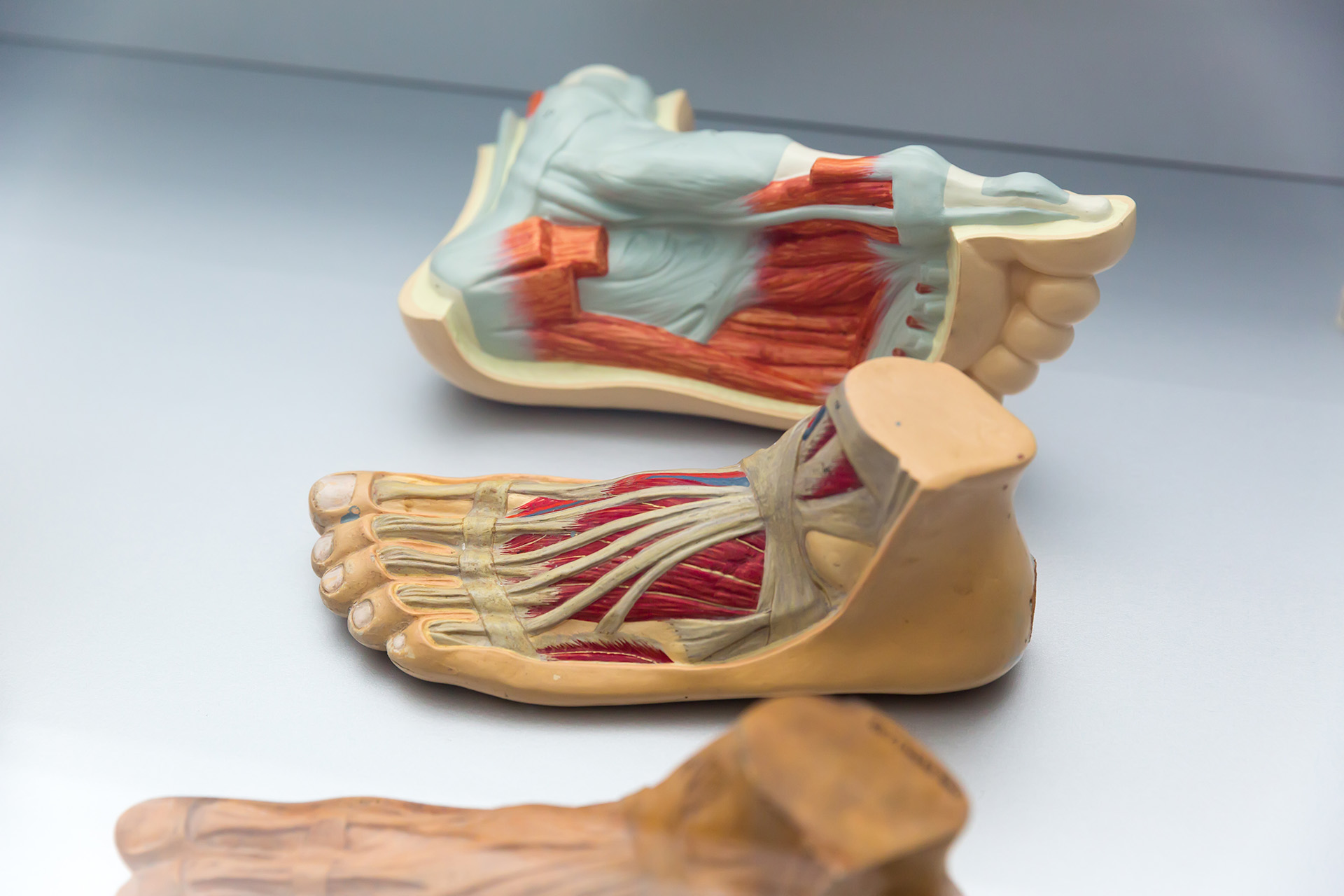
Recognising Flat Foot Pain Symptoms
Patients often experience a range of symptoms that indicate flat feet. These include localised discomfort along the inner arch or heel, swelling and pain on the inside of the foot and ankle, or feet that feel tired and achy after prolonged standing or walking.
Changes in gait, reduced balance and frequent tripping can also indicate underlying instability in the feet. Secondary problems may emerge, including shin splints, stress fractures, knee and hip discomfort, and lower back pain. Over time, the emotional toll of persistent pain can limit mobility and reduce the quality of life for athletes and everyone else alike.
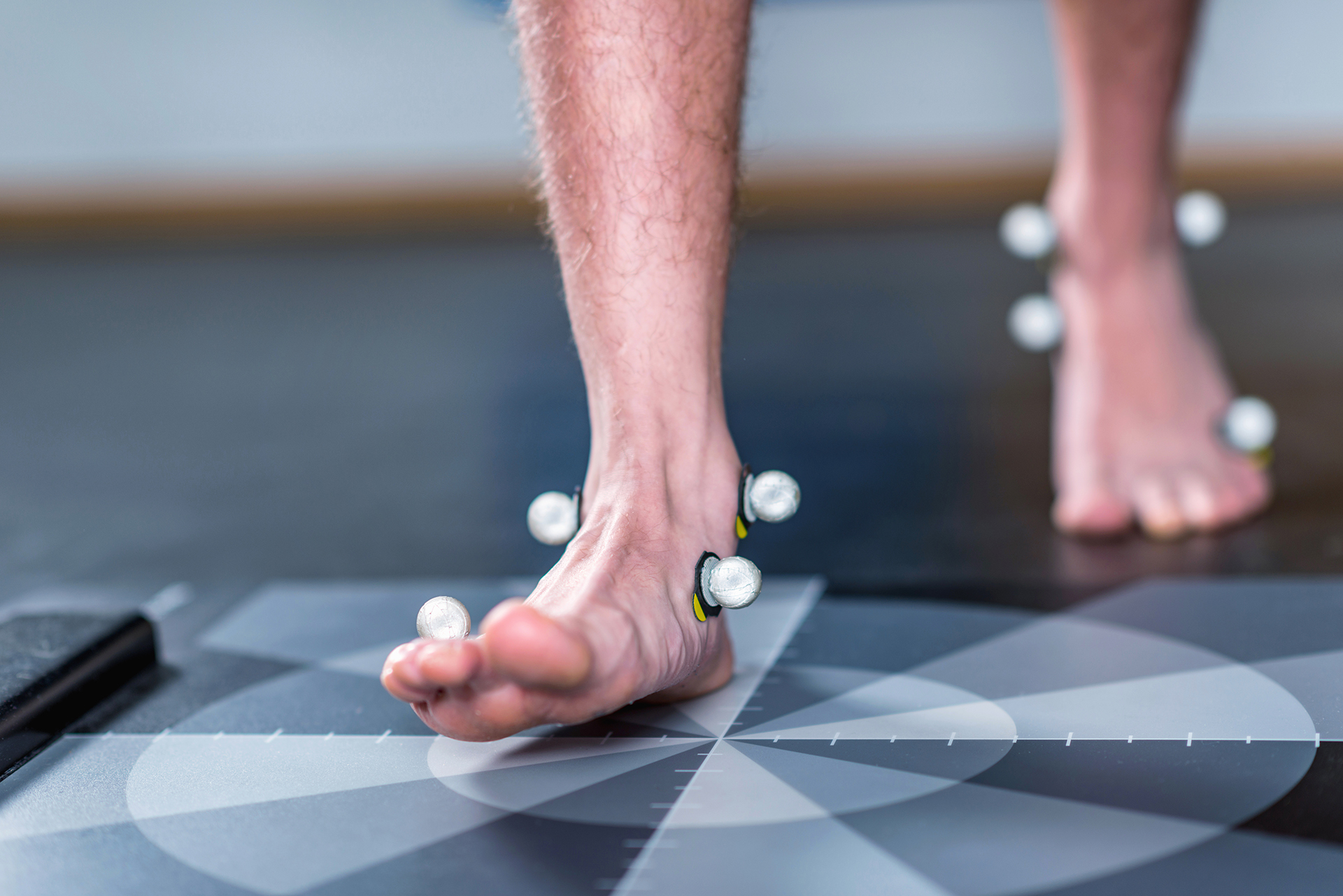
How Podiatrists Diagnose Flat Foot Pain
There are two main types of flat feet: flexible flat feet show an arch when seated but collapse once weight is applied, while rigid flat feet maintain little or no arch regardless of position. Both presentations can alter gait and balance.
Podiatric diagnosis begins with a physical assessment, which involves observing how the arch behaves when standing, walking, and bearing weight. The key benefit of early podiatric assessment is the chance to prevent minor symptoms from progressing into more complex or chronic conditions.
Functional tests will assess gait mechanics and range of motion. At The Foot Practice, advanced diagnostic tools such as the RehaWalk® pressure sensor treadmill analysis provides a precise map of how forces move through the foot during walking or running. In some cases, imaging techniques, such as X-rays, ultrasounds or MRIs may be used as needed to rule out arthritis, tendon tears, or stress fractures.
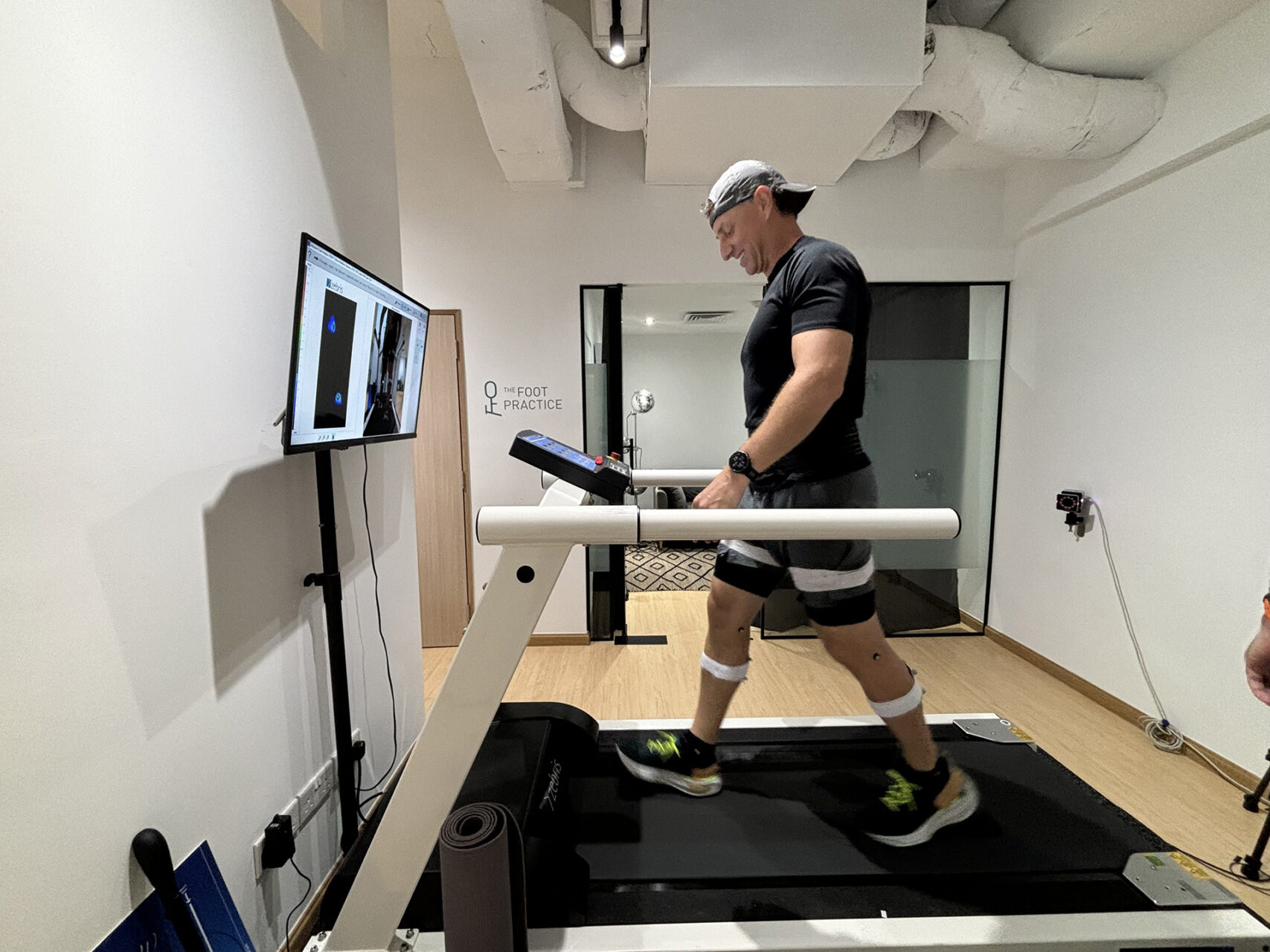
Management for Flat Foot Pain
No blanket intervention that guarantees flat foot pain relief; they must be tailored to the individual’s needs.
Custom orthoses designed through detailed footwear assessments help redistribute load and realign the foot, reducing pressure on the arches and joints. Supportive insoles tailored to an individual’s foot mechanics provide both immediate relief from flat foot pain and long-term stability.
Physical therapy plays a vital role, particularly targeted strengthening of the posterior tibial muscle and calf stretches to improve flexibility. Mobilisation exercises help restore mobility in stiff foot joints, while other flat foot pain relief exercises improve endurance in the supporting muscles. These approaches address both pain and the root cause of dysfunction.
Footwear recommendations are often central to a recovery from flat feet pain. Stability trainers or motion-control shoes reduce overpronation, while lifestyle modifications such as weight management or switching to low-impact activities like swimming or cycling further minimise the strain from flat feet pain.
In cases involving tendon injury or inflammation, medical interventions such as anti-inflammatory treatment, taping or focused Shockwave Therapy are used. Shockwave Therapy can stimulate healing in damaged tissue and accelerate recovery when conservative measures have failed to manage chronic flat foot pain.
Surgery remains a last resort, reserved for severe flat foot deformity, and may involve tendon reconstruction, osteotomy or fusion.
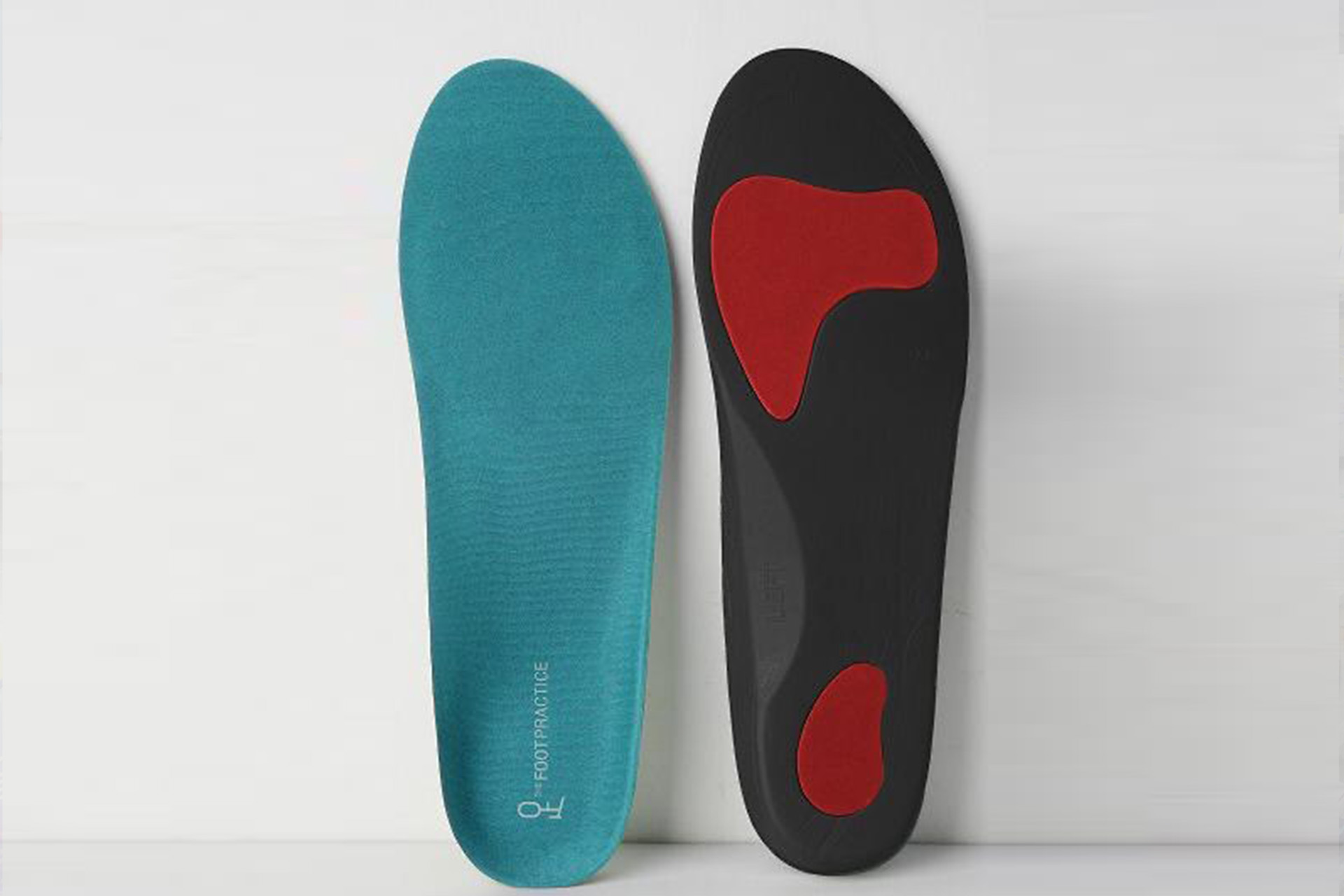
Living with Flat Feet: Daily Life and Coping Strategies
Living with flat feet doesn’t mean living with constant discomfort. With a few mindful adjustments, those with flat feet can manage daily activities more comfortably and protect their long-term foot health. One of the most important steps is choosing supportive footwear. Look for shoes with firm arch support, cushioned soles and a stable heel counter to help reduce strain on your arches. Avoid high heels and unsupportive flats, as these can worsen symptoms and lead to additional foot pain for flat feet.
Incorporating simple routines into your daily life can also make a significant difference. Stretching the calf muscles and the Achilles tendon helps maintain flexibility and reduces tension in the feet. Taking breaks to rest your feet, especially if you stand or walk for long periods, can also help prevent fatigue and discomfort. Using over-the-counter arch supports or insoles designed for flat feet may provide extra comfort during daily activities.
Importantly, pay attention to your body’s signals. If you notice new pain, swelling, or changes in your walking pattern that last for more than two weeks, it’s essential to address these issues promptly. Maintaining a healthy weight can also reduce the pressure on your feet and lower the risk of developing related problems. For those who enjoy exercise, low-impact activities such as swimming or cycling are excellent choices that can minimise stress on your arches while keeping you active.
By making thoughtful choices and listening to your feet, you can manage flat feet and continue to enjoy an active, comfortable lifestyle.
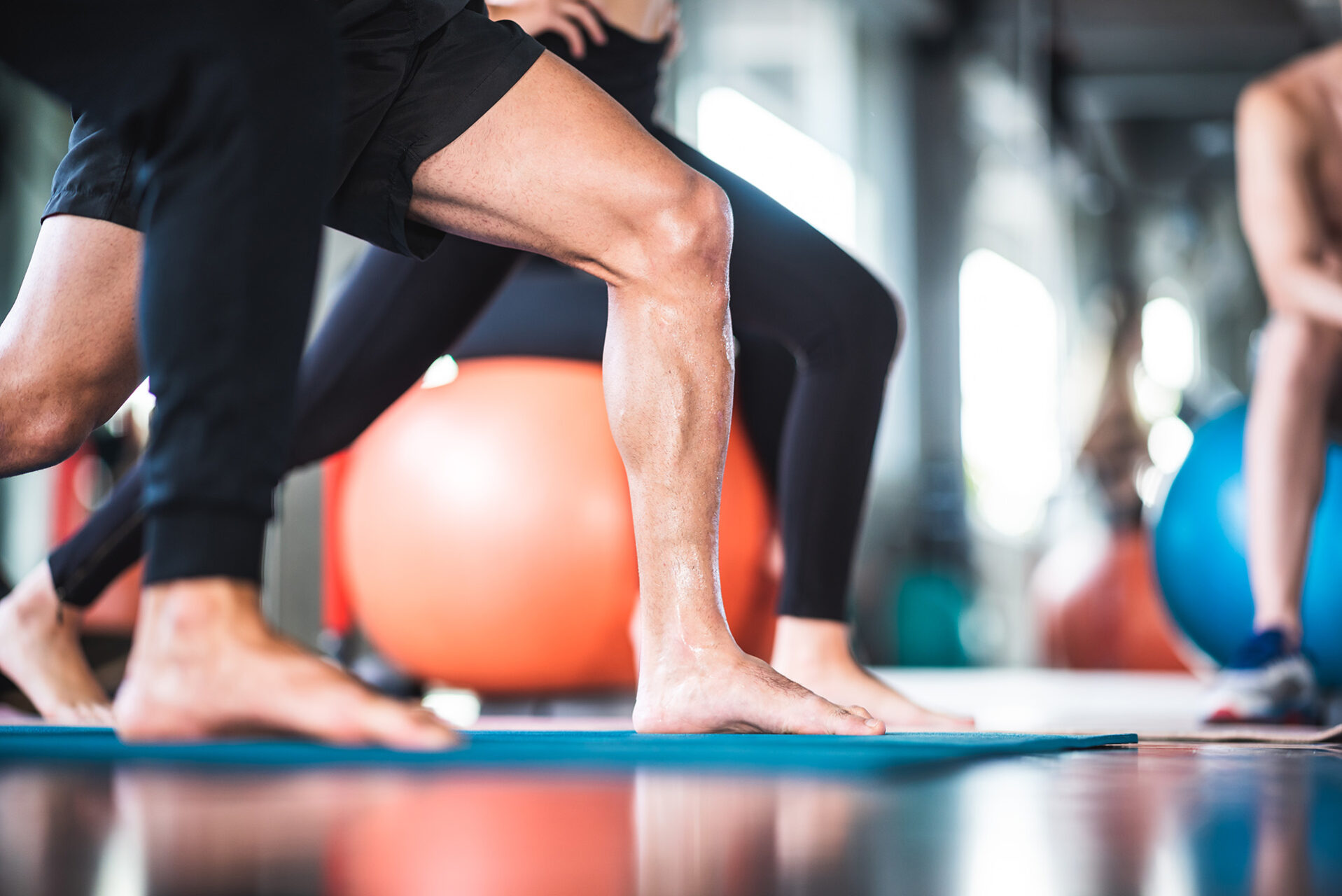
Risks of Ignoring Flat Foot Pain
If untreated, flat foot pain can progress into chronic plantar fasciitis, Achilles tendonitis and recurrent ankle sprains. Stress fractures are more likely to occur due to uneven loading. Over time, poor mechanics may accelerate joint wear, increasing the risk of early osteoarthritis. Misalignment through the lower limb may leave some patients with persistent knee, hip or back pain that becomes harder to manage as the years pass. For these reasons, it’s essential to seek professional help, especially if your flat foot pain persists for more than two weeks.
When to See a Podiatrist
It is time to seek professional advice if flat foot arch pain or heel pain persists despite rest, if pain spreads to the knees or hips, or if swelling or deformity worsens. Children showing pain, poor posture, or difficulty keeping up with peers should also be assessed early, as interventions at a young age can prevent lifelong complications.
At The Foot Practice, we encourage patients to consult our podiatrists for the management of conditions and for preventive foot care. Identifying the source of flat foot ankle pain or sole pain early allows for simpler, less invasive solutions. If you are living with flat foot pain, contact The Foot Practice today to schedule a comprehensive foot assessment.

